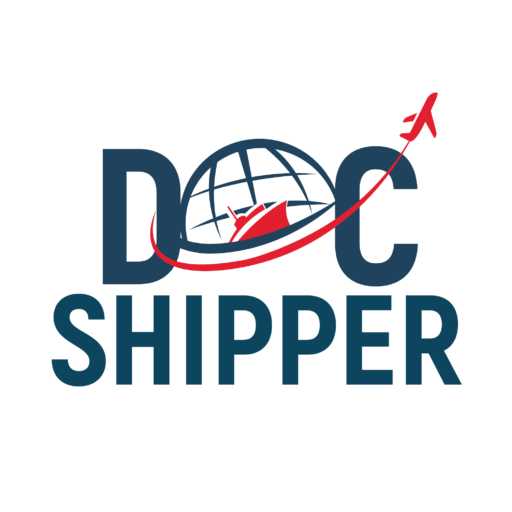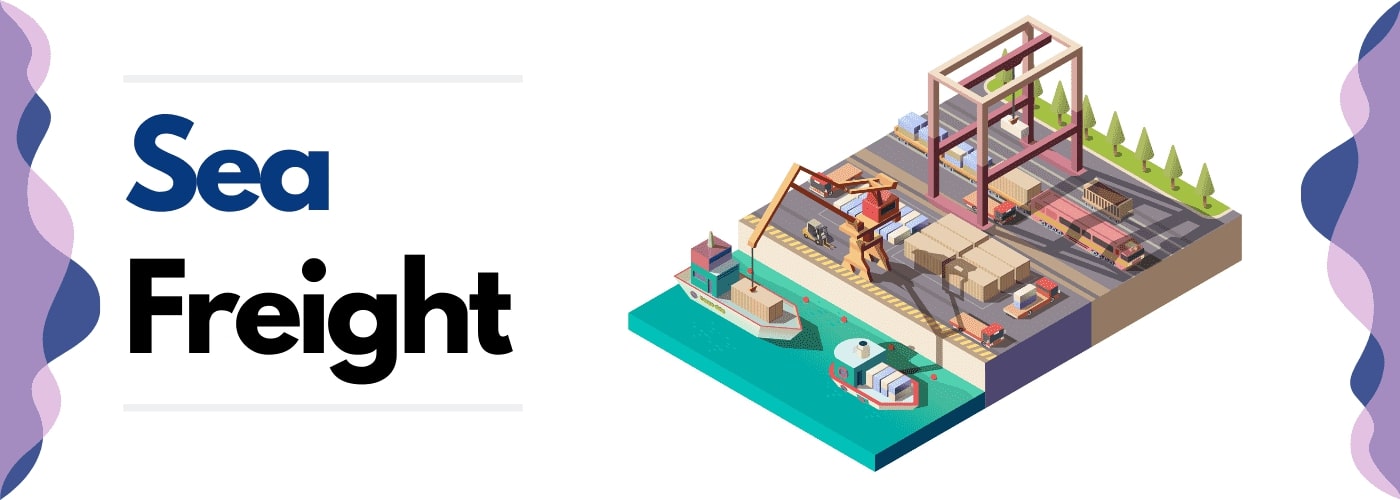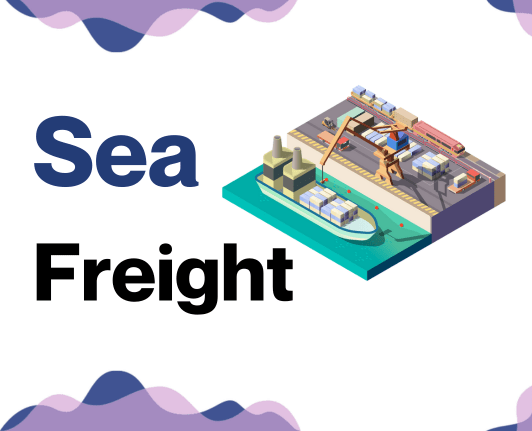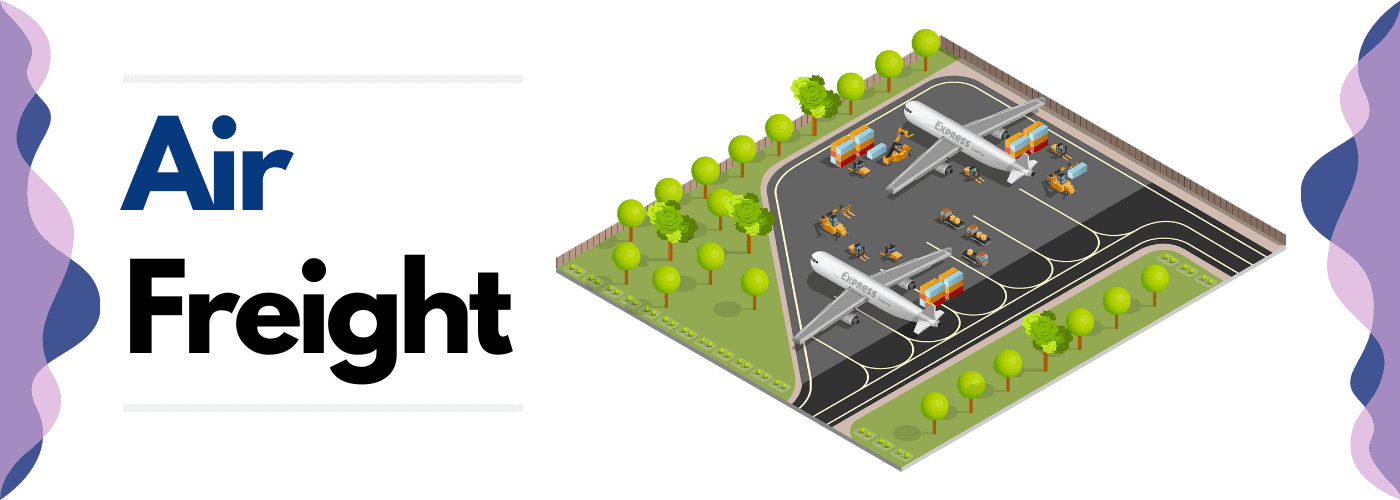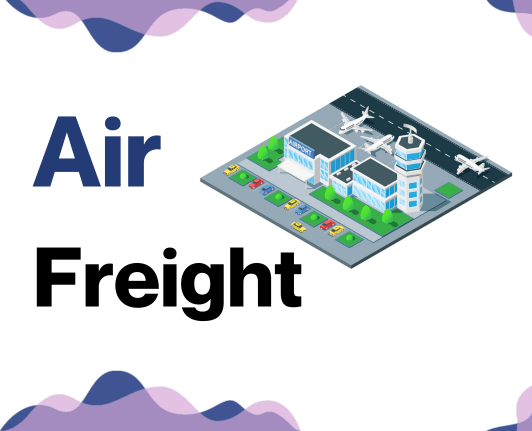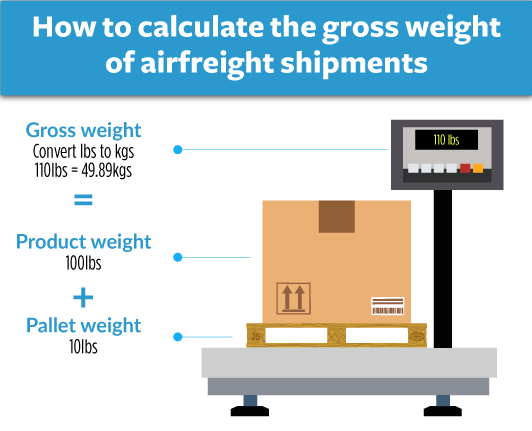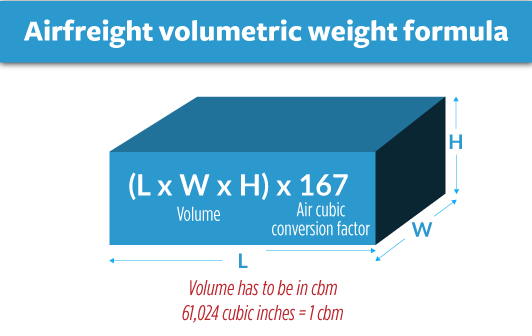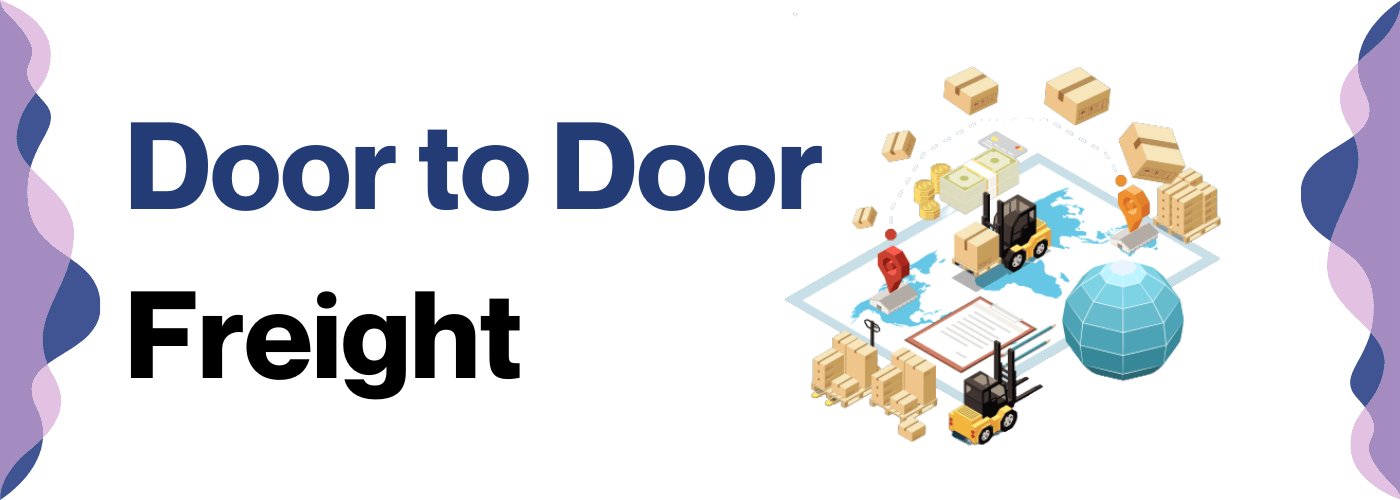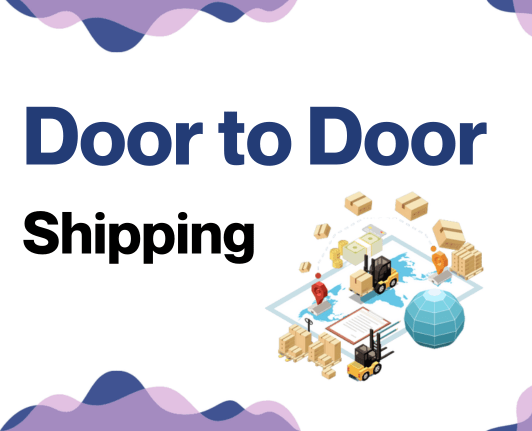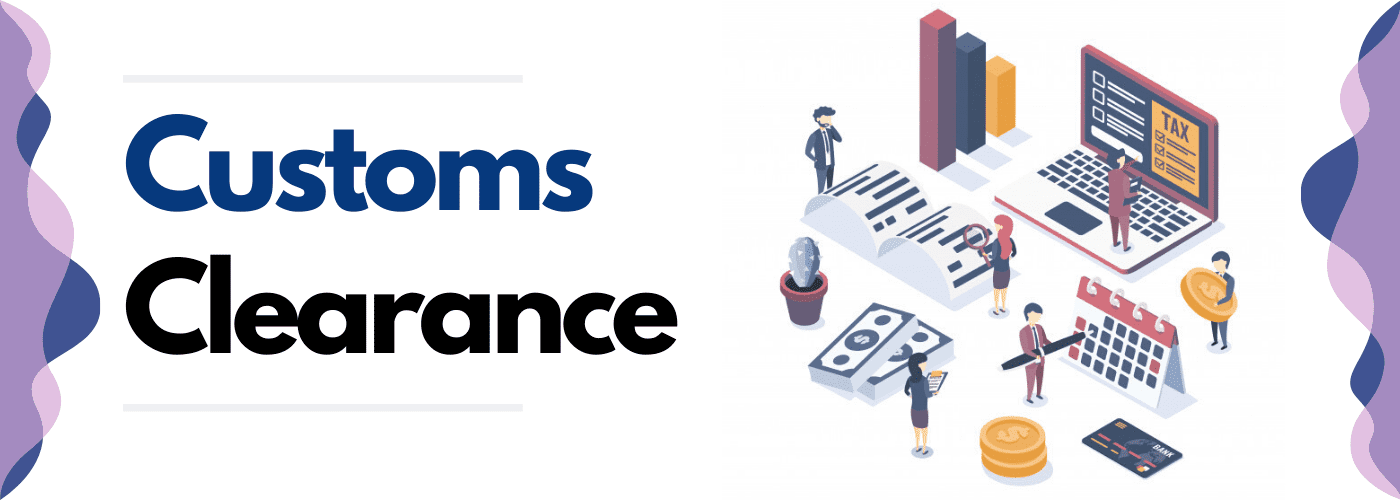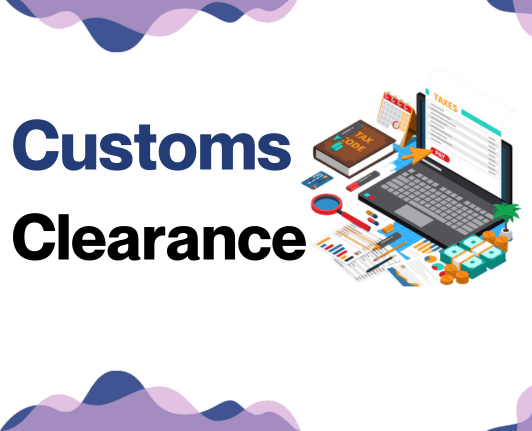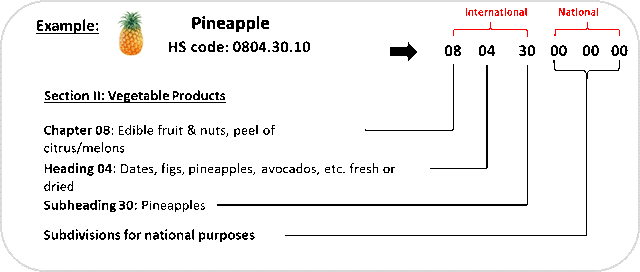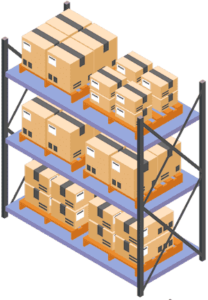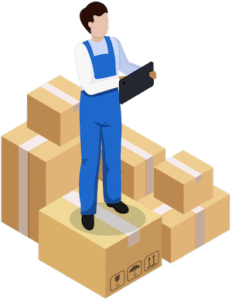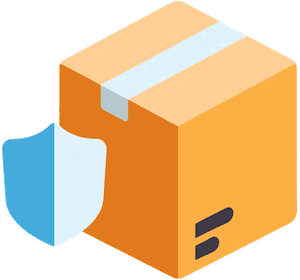Arctic ice and desert heat may not have much in common, but when it comes to shipping goods from Qatar's scorching deserts to Finland's frosty landscapes, fascinating challenges arise. This guide will untangle the web of complexities that lie in comprehending rates, deciphering transit times, and demystifying customs regulations. We will traverse the expanse of freight options, including sea, air, road, and rail, giving you the insights you need to find the best fit. We'll help you navigate the maze of customs clearance, duties, taxes, and provide advice customized for your business. If the process still feels overwhelming, let DocShipper handle it for you! Our dedicated team transforms these challenges into successes, taking care of each minute detail of the shipping procedure to ensure your goods hit their destination, every time.
Which are the different modes of transportation between Qatar and Finland?
Imagine you're shipping a treasure from grand Qatar to serene Finland. The vast geographical distance between these two countries presents unique challenges. With sea borders inaccessible directly, and a lengthy road journey through many nations, air freight emerges as the most effective transport method. It's like choosing to ride a bird instead of walking when distance matters. Quick, less bothersome with borders, and flexible for different cargo types, air transport can align with the golden needs of shipping between these two locations. It's instrumental in overcoming international freight puzzles efficiently, just like using a secret map to find your treasure faster.
How can DocShipper help?
Shipping between Qatar and Finland can be tricky, but not with DocShipper! Our world-class services simplify every step, from customs clearance to delivery. With our expert team by your side, your shipment is in safe hands. Want a free estimate within 24 hours? Or need to discuss your options? Reach out to us!
DocShipper Tip: Sea freight might be the best solution for you if:
- You're dealing with hefty quantities or large-scale goods. Sea freight is your go-to for maximizing space without stretching your budget.
- Your cargo doesn't have an urgent deadline, as sea freight typically has longer transit times compared to air or rail.
- Your shipping routes are between major ports, allowing you to leverage the extensive global network of sea shipping lanes.
Sea freight between Qatar and Finland
Dive into the bustling world of ocean freight between Qatar and Finland, famous for their prosperous trade relationship. Cruising major cargo ports in Qatar like Hamad and Ras Laffan, or hitting west to Finnish ones like Port of Helsinki and Port of Turku, you witness the bustle that drives these economies. While sea freight takes its time, it brings its own charm – cost efficiency for hefty goods which is a windfall for businesses.
Yet, like a rough sea wave, shipping processes between these nations can jolt many shippers, flushing a barrage of challenges. Unforeseen hiccups in documentation, lack of awareness about customs nuances, and formulating an effective shipping strategy can all transform a simple shipment into a tangled mess. But do not fear the high tides, as we have charted specific best practices that shed light on these complexities. Hop aboard as we set sail into a comprehensive guide that takes the helm on your route to simpler and efficient shipping.
Main shipping ports in Qatar
Port of Hamad
Location and Volume: Strategically located in the Umm Al Houl region, the Hamad Port is a critical gateway for Qatar's export and import trade, with a shipping volume of over 2 million TEU.
Key Trading Partners and Strategic Importance: Main trading partners include countries across Asia, Europe, and America. Hamad is of strategic importance not just for Qatar, but for surrounding Middle Eastern countries as well given its advanced technology and vast capacity.
Context for Businesses: If you're a business looking to access markets in the Middle East, the intricate network and extensive global connectivity of Hamad Port presents a compelling opportunity. Its robust infrastructure, modern facilities, and advanced container handling capabilities might make it an integral part of your logistic strategy.
Port of Al Ruwais
Location and Volume: Situated in the northern part of Qatar, Al Ruwais Port is essential for local and regional trade, often serving smaller vessels including traditional fishing dhows and regional ferries.
Key Trading Partners and Strategic Importance: Al Ruwais has key connections across the Gulf Cooperation Council (GCC) region, playing a vital role in supporting the neighboring areas with passenger services and goods ferrying.
Context for Businesses: Al Ruwais port could significantly complement your shipping strategy if you're particularly seeking to import or export to neighboring countries in the GCC region, considering its specialized regional connectivity. It can also serve as a potential gateway into Qatar's northern markets.
Please note that the vast majority of international trade in Qatar flows through the state-of-the-art Hamad Port. The other ports in the country generally cater to specialized or regional trade needs. It is also important to note that the logistics landscape can quickly change, and it is always imperative to keep abreast of latest developments directly from the resources.
Main shipping ports in Finland
Port of Helsinki
Location and Volume: The Port of Helsinki, situated in the capital city of Finland, holds an integral position in European trade with a shipping volume of over 12.6 million tonnes in 2022.
Key Trading Partners and Strategic Importance: This port has critical connections with countries including Germany, Russia, and Sweden. The strategic importance of this port also lies in its status as Finland’s busiest passenger port with over 12 million passengers annually.
Context for Businesses: If you’re looking to leverage major shipping lanes between Northern and Central Europe, the Port of Helsinki, with its vast passenger carriage and efficient goods handling, could be significant to your logistics plans.
Port of Turku
Location and Volume: Located on the southwestern coast of Finland, the Port of Turku processed more than 4.2 million tons of cargo in 2019.
Key Trading Partners and Strategic Importance: Major trading partners include Sweden and Germany. Its strategic importance comes from its historical significance as Finland’s oldest city and harbor, connecting it to the Stockholm–Turku maritime route.
Context for Businesses: For businesses aiming to tap the Nordic and Baltic markets, the Port of Turku’s location and history present a potential key component in your shipping strategy with direct maritime links.
Port of Naantali
Location and Volume: In southwestern Finland, the Naantali port is noted for its specialty in oil and petroleum trading, handling a shipping volume of over 3.7 million tons annually.
Key Trading Partners and Strategic Importance: Trading partners include Russia and Sweden. The port's strategic significance lies within its specialization in the oil and petroleum industry and its role in Finland's energy supply.
Context for Businesses: If your business operates within the energy sector and seeks to expand within this specialized market, the Naantali port could be crucial for your logistic considerations, given its firm foothold in oil and petroleum shipments.
Port of Kotka
Location and Volume: Situated in southeastern Finland near the Russian border, the Kotka port has a shipping capacity exceeding 13.3 million tons.
Key Trading Partners and Strategic Importance: Primarily trading with Russia, the port's strategic importance is bolstered by its geographic location, which makes it ideal for trade between the Nordic nations, Europe, and Russia.
Context for Businesses: If your shipping strategy involves connections with Russia and other Nordic countries, the Port of Kotka, known for its excellent land and sea connections, could be a valuable asset in your logistics planning.
Port of Hamina
Location and Volume: Close to the Russian border in southeast Finland, the Hamina port sees an annual shipping volume of approximately 4.5 million tons.
Key Trading Partners and Strategic Importance: Its trading relationships particularly center on Russia and the Baltic nations. The port notably hosts Finland's largest liquefied natural gas LNG terminal, enhancing its strategic importance.
Context for Businesses: If your business is involved in the energy market, especially LNG, the Hamina port could be crucial given its large-scale LNG terminal and connections with Russia and the Baltic markets.
Port of Rauma
Location and Volume: On the western coast of Finland, the port of Rauma handled over 6.2 million tons of cargo in 2019.
Key Trading Partners and Strategic Importance: Germany and the Netherlands are key trading partners here. The port significantly supports the export of Finland's paper and pulp industry.
Context for Businesses: If your company operates within the paper and pulp industry looking to reach European economies, the Port of Rauma’s capabilities in handling these goods make it a potential cornerstone in your logistics strategy.
Should I choose FCL or LCL when shipping between Qatar and Finland?
Making the right shipping choice between Qatar and Finland can mean the difference between cost-effectiveness and blowing your budget. Full Container Load (FCL) or Less than Container Load (LCL)? This significant decision impacts not just your pocket but delivery times too. Get ready to dive into the world of sea freight options as we help unravel these terms and give you the insight you need to make shipping smooth sailing, regardless of your cargo size. Make a wise choice that aligns with your business needs - it's all about strategic shipping!
LCL: Less than Container Load
Definition: LCL, or Less Than Container Load, is a freight shipping method where various exporters share a single container for shipping smaller amounts of their goods. In contrast to full container load shipping, LCL is adaptable and is priced based on the cargo's volume.
When to Use: This technique is most effective when the cargo volume is less than 14-15 CBM, or roughly half of a 20-foot container's total space. This gives you the flexibility to ship goods without waiting to fill an entire container, speeding up delivery times.
Example: For instance, if a Qatari construction firm needs to ship 10 CBM of building materials to a project in Finland, they might opt for LCL shipment to save on cost and time, rather than having to wait for additional cargo to fill a complete container.
Cost Implications: While the per-unit price of LCL freight may be higher than FCL freight, businesses can make considerable savings because they only pay for the space they use. This means no more bearing the cost of a half-empty container or unnecessary storage while waiting to fill a full one. However, it's essential to factor in handling charges at both origin and destination ports, which can add to the overall cost.
FCL: Full Container Load
Definition: FCL Shipping - Full Container Load - means you're hiring an entire container for your cargo transfer. Your goods occupy a whole container that can be locked and sealed, offering both rental of a 20'ft or a 40'ft container.
When to Use: FCL is typically chosen when the volume of goods surpasses approximately 13-15 cubic meters (CBM), making it economical for high-volume shipments. The safety and security of FCL is superior as the container remains sealed from pickup to delivery.
Example: Suppose you're a car parts manufacturer in Qatar, dispatching bulk shipments to your partners in Finland. Your cargo size averages 16 CBM. Choosing FCL shipping would yield cost advantages while giving peace of mind as the container remains sealed throughout the journey.
Cost Implications: FCL shipping quote is often lower than LCL per CBM for larger volumes of goods. However, remember you're paying for the whole container space, whether you utilize it fully or not. It's important to get an FCL shipping quote considering your specific cargo and preferred FCL container type. For high-volume transfers, the savings can be substantial.
Unlock hassle-free shipping
With a myriad of factors to consider, choosing between consolidation and a full container for your Qatar-Finland shipping can be complex. At DocShipper, we're committed to making this process simple and hassle-free. Our ocean freight experts evaluate factors like shipment size, urgency, and shipping costs to help select the best option for your business. Interested in making your cargo shipping decisions easier? Request a free estimate today—we're ready to steer your shipping choices in the right direction.
How long does sea freight take between Qatar and Finland?
Typically, sea freight shipping between Qatar and Finland takes approximately 50 days. However, keep in mind that transit times rely heavily on various factors. These variables can range from the specific ports used for loading and offloading, the weight, and the nature of the goods being transported. This broad picture should give you an idea, but to get an exact quote based on your unique circumstances, we'd recommend reaching out to an experienced freight forwarder like DocShipper.
Now, let's break things down by port. Here's a glance at the average transit times, by sea, between the main freight ports in these countries:
| Freight Port (Qatar) | Freight Port (Finland) | Avg. Transit Time (Days) |
| Hamad Port | Port of Helsinki | 53 |
| Ras Laffan Port | Port of Kotka | 45 |
| Mesaieed Port | Port of Turku | 53 |
| Al Ruwais Port | Port of Hanko | 53 |
*Remember, these are average numbers and your shipment's actual transit time may vary.
How much does it cost to ship a container between Qatar and Finland?
Estimating shipping costs between Qatar and Finland can be a bit of a jigsaw. Ocean freight rates per CBM vary widely, as several pieces must fall into place to get a solid figure. It's influenced by your Point of Loading, Point of Destination, carrier choice, type of goods, and even monthly market fluctuations. This makes pinning down an exact shipping cost tricky. However, our shipping specialists excel at this puzzle. We look at your specific needs and consider all factors to provide the best shipping rates. Remember, we don't give a one-size-fits-all quote; your business is unique, and so is our approach to your cargo.
Special transportation services
Out of Gauge (OOG) Container
Definition: OOG containers are specifically designed to accommodate cargo that doesn't fit into standard containers due to excess weight or dimensions.
Suitable for: Industrial machinery, oversized equipment, or any bulky out of gauge cargo that can't be broken down into smaller units.
Examples: Large construction vehicles, turbines, forklifts are examples of items suitable for shipping in an OOG container.
Why it might be the best choice for you: If your business deals in oversized or overweight cargo, then OOG containers ensure the item's secure transportation with minimal dismantling.
Break Bulk
Definition: Break bulk refers to goods that must be loaded individually, and not in containers nor in bulk as with oil or grain.
Suitable for: Large items and equipment that can't be containerized due to size or shape.
Examples: Yachts, cranes, or power plant components often ship as break bulk.
Why it might be the best choice for you: Break bulk shipping offers flexibility for unconventional cargo sizes and shapes, particularly helpful if your business handles a variety of products.
Dry Bulk
Definition: This is a method where commodities such as grain, coal, or minerals are transported unpackaged in large quantities, known as a loose cargo load.
Suitable for: Raw materials that have a homogeneous nature.
Examples: Minerals, coal, grain, and gravel are commonly transported loose in a ship’s hold as dry bulk.
Why it might be the best choice for you: Dry bulk shipping is an economical and efficient solution if your business involves transporting large quantities of homogeneous materials.
Roll-on/Roll-off (Ro-Ro)
Definition: Roll-on/roll-off vessels are ships with built-in ramps that allow vehicles to be driven on and off, known as a ro-ro vessel.
Suitable for: All types of motorized, towable machinery, and static cargo on MAFI trailers.
Examples: Cars, trucks, semi-trailer trucks, trailers, and railroad cars all use Ro-Ro for their transportation.
Why it might be the best choice for you: If your business emphasizes vehicle transportation, the Ro-Ro service provides an efficient and secure option, as it minimizes the handling of goods thus reducing potential damages.
Reefer Containers
Definition: Reefer containers are refrigerated containers used for the transport of perishable goods at controlled temperatures.
Suitable for: Foods, pharmaceuticals, and other perishable items requiring temperature-controlled transport.
Examples: Fresh fruits, meats, dairy products, and vaccines are often shipped in reefer containers.
Why it might be the best choice for you: If your business deals with perishable items, a reefer container will maintain product quality by providing the necessary temperatures during transit.
With DocShipper, we understand each business has specific shipping needs and we are committed to offering customized solutions to meet them. Don't hesitate to contact us for a free shipping quote in less than 24h.
DocShipper Tip: Air freight might be the best solution for you if:
- You're up against the clock or have a non-negotiable delivery date. Air freight is your fastest bet for meeting tight timelines.
- Your shipment is on the smaller side, falling below 2 CBM. Air freight is particularly well-suited for compact cargo loads.
- Your goods are destined for locations that aren't well-served by maritime or rail options. Air freight expands your reach by connecting you to a vast array of international airports.
Air freight between Qatar and Finland
Fast, precise, and ideal for compact, valuable loads - that's air freight for you, especially when shipping between Qatar and Finland. Ever thought why your dainty electronics or bristling bouquet of roses arrived in top shape? Air freight is the secret sauce. Even Swiss watches ticking synchronously over Arctic skylines owe their safe transit to air freight. Nevertheless, docking at the air freight marina isn't always a smooth sail. Many shippers hit icebergs while setting up their shipment. Misjudging weight calculations, for example, can blow up cargo costs. Imagine packing your prized porcelain but forget to factor in the 'volumetric weight'; you could be in for a pricey surprise. Similarly, overlooking industry best practices and procedural nuances could rattle your shipping journey, shooting up costs faster than a jet takes off! Stay tuned to avoid these turbulence and glide effortlessly over your air freight adventures.
Air Cargo vs Express Air Freight: How should I ship?
Sending your goods from Qatar to Finland? You're probably torn between Air Cargo and Express Air Freight - let's simplify. Imagine Air Cargo as a friendly passenger who shares a flight with others, while Express, on flashy wheels, wants the whole plane to itself. Stick around to learn which best suits your business, considering cost-effectiveness, speed, and schedules.
Should I choose Air Cargo between Qatar and Finland?
Air cargo between Qatar and Finland might be just what you need - reliable and cost-effective. Airlines such as Qatar Airways and Finnair prominently engage in this mode of freight. While fixed schedules might lengthen transit times, the certainty they bring could align well with your budget planning. Importantly, from 100/150 kg (220/330 lbs) of cargo, air consignments become even more attractive in terms of economy and efficiency. Whether your shipment is big or small, consider air cargo for your next transportation.
Should I choose Express Air Freight between Qatar and Finland?
Express Air Freight is a specialized service employing cargo-only planes. Capable of handling your shipments under 1 CBM or 100/150 kg (220/330 lbs), it provides speed and convenience unparalleled in the logistics sector. This service is brought to you by internationally recognized couriers like FedEx, UPS, or DHL. If your business is looking for a time-critical delivery solution from Qatar to Finland, express air freight could be an excellent choice, ensuring swift and efficient transportation of your cargo.
Main international airports in Qatar
Hamad International Airport
Cargo Volume: Hamad International Airport handles more than 2 million tons of cargo annually, making it one of the major cargo airports in the region.
Key Trading Partners: Key trading partners include European countries, the United States, and Asian countries like China, India, and Japan.
Strategic Importance: Based in Qatar's capital, Doha, this airport serves as a hub for many international cargo airlines. Its strategic location allows for convenient connectivity to Africa, Asia, Australia, and Europe.
Notable Features: A sophisticated Cargo Terminal, capable of handling all types of cargo including livestock, dangerous goods, and perishables. The Air Cargo Terminal is equipped with fully automated storage and retrieval systems.
For Your Business: If you're in business with European, Asian, or American partners, integrating Hamad International Airport into your shipping strategy can improve efficiency. Its technologically advanced infrastructure ensures safe, efficient handling and transshipment of your cargo, regardless of type.
Doha International Airport
Cargo Volume: Due to the opening of Hamad International Airport, the cargo volume has significantly decreased but it still remains operational for cargo flights.
Key Trading Partners: As it primarily serves as a domestic airport now, regional partners are its key trading partners.
Strategic Importance: It served as the main airport for Qatar until the opening of Hamad International. However, it continues to be used for local and private aviation and is still operational for cargo flights.
Notable Features: It has a separate cargo terminal, which is dedicated to handling express and courier shipments.
For Your Business: If your business primarily involves shipping goods within the country or nearby Gulf countries, Doha International Airport could play a key role in your supply chain. Its dedicated express and courier terminal might make it an especially valuable asset for time-sensitive or high-priority shipments.
Main international airports in Finland
Helsinki-Vantaa Airport
Cargo Volume: With an annual cargo volume exceeding 1.2 million tonnes, it's the busiest cargo airport in Finland.
Key Trading Partners: Major trading partners include Germany, Sweden, Russia, Japan, the USA and China.
Strategic Importance: As Finland's primary international airport, it offers extensive connections across Europe and the world. Its location also makes it suitable for transiting goods between Europe, Asia, and North America.
Notable Features: Equipped with a sophisticated cargo terminal, it handles all types of cargo including high-value, perishable, and temperature-sensitive items. It's also supported by reliable local and long-haul trucking services.
For Your Business: If you have high-value, temperature-sensitive goods or you're looking for an entry point into the European market with potential for further transit, Helsinki-Vantaa Airport might be your best pick.
Oulu Airport
Cargo Volume: Approximately 50,000 tonnes of cargo are handled per year, making it the second busiest in Finland.
Key Trading Partners: Major trading partners include Norway, Sweden, Denmark, and Germany.
Strategic Importance: It's a regional hub in Northern Finland, beneficial for businesses targeting the Nordic and Baltic markets.
Notable Features: Known for its efficiency and smaller size, goods can be cleared faster. It also specializes in handling delicate electronic and machinery goods.
For Your Business: If you're shipping electronics or machinery, or you're looking for faster clearance in a less crowded airport, Oulu airport could be a strong match.
Turku Airport
Cargo Volume: Moves approximately 30,000 tonnes of cargo annually.
Key Trading Partners: Principal trading partners include Sweden, Estonia and Germany.
Strategic Importance: Situated near Turku Harbor, enabling businesses to easily combine sea and air freight. Useful for reaching other Scandinavian and Baltic countries.
Notable Features: Special facilities for large and heavy cargo. Proximity to the harbor offers opportunities for multi-modal logistics solutions.
For Your Business: If your business deals with large items or you want an airport close to sea transport options, consider Turku Airport for its multimodal capabilities.
Tampere-Pirkkala Airport
Cargo Volume: Handles approximately 20,000 tonnes of cargo per year.
Key Trading Partners: Mainly Sweden, Norway, and Denmark.
Strategic Importance: Has good road and rail connections, making domestic distribution easier. Also, it's key for accessing the upper Baltic markets.
Notable Features: Excellent domestic transport links. Offers direct and transit cargo flights to Scandinavia and the Baltics.
For Your Business: If your focus is on the domestic Finnish market or the immediate regions, Tampere-Pirkkala might be a suitable choice.
Vaasa Airport
Cargo Volume: Handles around 10,000 tonnes of cargo annually.
Key Trading Partners: Sweden and the rest of Finland.
Strategic Importance: Located in a strong industrial region, it supports export-oriented businesses.
Notable Features: Provides specialized solutions for heavy and oversized cargo due to its rich industrial activity.
For Your Business: If you're involved in shipping parts to the heavy industries, Vaasa Airport's specialized logistics might be beneficial.
How long does air freight take between Qatar and Finland?
Shipping goods from Qatar to Finland by air freight typically takes around 5 to 7 days. However, keep in mind this is an average estimation and actual transit times can vary. Factors like the specific airports involved, size and weight of your shipment, and type of goods you're sending can all impact delivery speed. For the most accurate timelines, it's best to get in touch with a reliable freight forwarder such as DocShipper.
How much does it cost to ship a parcel between Qatar and Finland with air freight?
Air freight costs from Qatar to Finland can range widely, averaging around $3 to $10 per kg. However, an exact price isn't feasible due to factors such as airport distances, parcel dimensions, weight, and nature of goods. Remember, each shipment is unique. Our team is dedicated to working closely with you, quoting on a case-by-case basis to ensure you receive the best possible rates. Don't let pricing uncertainties halt your operations, allow us to assist you. Contact us and receive a free quote in less than 24h.
What is the difference between volumetric and gross weight?
Gross weight refers to the actual weight of the parcel including packaging and any internal materials. Volumetric weight, also termed dimensional weight, captures the space a parcel occupies during shipping.
For air cargo, calculating gross weight is straightforward - you weigh the shipments in kilos. Let's say it's 100 kg (or around 220 lbs for reference).
But, volumetric weight is different. You calculate volumetric weight in kilos using the formula: Length (cm) x Width (cm) x Height (cm) / 6000. For example, if you're shipping a 1m cube parcel, the volumetric weight would be 167 kilos or around 368 lbs.
Express air freight services often use a similar formula, but with a different divisor. For example, 5000 may be used instead of 6000, yielding a higher volumetric weight.
Why does this matter? Air freight charges are based on the higher of the two: gross weight and volumetric weight. So in our example, you'd be charged based on 167 kg. This is because carriers must consider both the weight and the space a shipment occupies on their aircrafts. Understanding these principles helps to pack more efficiently and control shipping costs.
DocShipper tip: Door to Door might be the best solution for you if:
- You prioritize a smooth, hassle-free shipping experience from start to finish. Door-to-door services manage the entire journey, from initial collection to ultimate delivery.
- You appreciate streamlined communication and would rather deal with one person. A dedicated agent is usually assigned to oversee every detail of your door-to-door shipment.
- You want limit the number of touchpoints for your cargo. Door-to-door services reduce the frequency of transitions between various transport methods, thereby lowering the likelihood of damage or loss.
Door to door between Qatar and Finland
Navigating the logistics maze from Qatar to Finland? Consider Door to Door shipping, a comprehensive solution that takes cargo from origin straight to destination, eliminating the stress of multiple handling stages. With advantages like minimal delays, improved efficiency, and cost-effectiveness, it's a viable option for businesses. So pack your goods and fasten your sea-belts — let's dive into the journey ahead!
Overview – Door to Door
Completely bypass the hassle and complexities of international logistics with our popular Door-to-Door service, shipping from Qatar to Finland. It’s a highly preferred, one-stop-shop for streamlining all shipping stages – collection, transport, customs, and delivery. DocShipper's clients routinely choose this stress-free solution due to its convenience and ease. Yet remember, while we oversee your shipment, unforeseen delays can occur, such as customs hold-ups. Quick, uncomplicated, and largely hands-off for you; let our professional assistance make your international shipping smoother, ensuring your goods reach the Finnish shores with minimum fuss. Experience this client-favourite and see how efficient your global transaction can be.
Why should I use a Door to Door service between Qatar and Finland?
Ever considered shipping Frosty the Snowman to Qatar during the peak summer? I think we've found you a perfect solution: Door to Door service from Qatar to Finland. Here's why:
1. Hassle-Free Goods Pickup: With this service, you can say goodbye to the stresses of packaging and pickup. Your logistics partner will handle everything at the origin, picking up goods right from your doorstep.
2. Timely Deliveries for Urgent Shipments: Need goods in Finland ASAP? Rely on Door-to-Door service to adhere to strict deadlines. It prioritizes urgent shipments, ensuring timely delivery every single time.
3. Specialized Care for Complex Cargo: From snowmen to heavy machinery, this service is equipped to handle your complex shipment needs. Experts provide specialized care, so there’s no need to worry about any shipment, no matter how peculiar.
4. Convenience of Full Trucking: With Door-to-Door service, your goods will be trucked straight to the final destination in Finland. Complete with customs clearance and delivery!
5. Complete Peace of Mind: The entire process, from pickup to delivery, all formalities, and paperwork are managed by professionals. No worrying about which document goes where, and where your goods are, at any time.
In conclusion, with Door to Door service, feel like you're shipping only as far as your front door – the professionals handle the worldwide journey in between. After all, world-class service should make global shipping feel like a local move!
DocShipper – Door to Door specialist between Qatar and Finland
Navigating the world of international shipping can be overwhelming. That's where DocShipper steps in. Experience stress-free door-to-door shipping from Qatar to Finland as we manage everything, from packing to transportation, across all shipping methods. We're proficient in custom procedures, ensuring an efficient delivery. Entrust your cargo to our dedicated Account Executive, ready to provide you with a free quote in less than 24 hours or consult for free. Sit back, relax, and let us take the helm of your logistics journey. All you need to do - get in touch!
Customs clearance in Finland for goods imported from Qatar
Customs clearance, the process of importing goods across borders, can be as chilling as a Finnish winter! Sneaky pitfalls like unforeseen charges might nip at your heels, while complex concepts of duties, taxes, and quotas may feel like you're lost in a dense forest, not to mention that licenses could get your goods stuck in customs! But don't worry, our guide will map out the terrain, guiding you through these frosty details. Always remember, our trusty team at DocShipper is ready to brave the journey for all types of items, globally. Want an estimate for your next freight project? Reach out to us with the goods origin, their value, and the HS Code. Equipped with these three elements, we'll provide a reliable estimate to secure your cargo's safe passage to Finland!
How to calculate duties & taxes when importing from Qatar to Finland?
When moving goods from Qatar to Finland, estimating the customs duties and taxes involved is a critical piece of the logistics puzzle. These expenses are calculated based on a few key components such as the country of origin, the Harmonized System (HS) code of the goods, their customs value, the applicable tariff rate, and any additional taxes or fees that these goods may be subjected to.
The journey towards an accurate estimate begins with identifying the country where the goods were originally manufactured or produced. Such information plays a crucial role because tariffs and trade agreements usually vary depending on the origin country. Once you've pinpointed the birthplace of your goods, this firmly sets you on the path towards understanding the financial implications of your import process.
Step 1 - Identify the Country of Origin
Knowing the origin of your goods is the foundation in understanding import duties and taxes. Here's why:
1. Trade Agreements: Qatar and Finland share fruitful collaboration under the EU-GCC Cooperation Agreement. Goods from Qatar might enjoy lower customs duties or even exemption due to these agreements. However, your consignment's country of origin dictates its eligibility.
2. Duty Rates: Customs duty rates are country-specific, originating from international relations. The rates for Qatari exports differ from other nations.
3. Import Restrictions: Each country has regulations about what it allows to import. Identifying the origin country helps to spot these restrictions early.
4. Calculation of Duties: You need to know the commodity's origin to correctly calculate duties and taxes.
5. Compliance: Properly stating the country of origin is a legal requirement to avoid penalties.
Before you jump to the Harmonized System (HS) code and determine customs costs, ensure you accurately determine the origin. This paves the way for smoothly calculating your import duties and taxes. Keep yourself updated on relevant trade agreements and import regulations for a hassle-free shipping experience from Qatar to Finland.
Step 2 - Find the HS Code of your product
The Harmonized System (HS) Code is an internationally standardized system of names and numbers used to classify traded products. Designed and managed by the World Customs Organization, it's used by more than 200 countries worldwide as a basis for their customs tariffs and the collection of international trade statistics. It plays a pivotal role in determining how much import or export duty is levied on a product when it moves internationally.
One of the simplest ways to get the HS Code of the product you wish to ship is by reaching out to your supplier. It's very likely that they have dealt with the import and export regulations pertaining to the product and will be well-versed in finding the appropriate HS Code.
In case this avenue isn't accessible, there's no need to worry. We'll walk you through the steps needed to find the HS Code of your product.
1. Click on this link to open the Harmonized Tariff Schedule tool.
2. Type the name of your product into the search bar.
3. Check the 'Heading/Subheading' column in the search results. That's where you'll find your product's HS Code.
The task might seem simple, but a note of caution is warranted here. It's of utmost importance to ensure the accuracy of the HS Code you choose. An incorrect code could result in a delay in the customs clearance process and potentially lead to fines. Therefore, it's always crucial to double-check your code.
As a final step, here's an infographic showing you how to read an HS code.
Step 3 - Calculate the Customs Value
Understanding the concept of Customs Value is crucial when importing goods from Qatar to Finland. Many mistake it as the simple commercial value of goods. However, it's more encompassing. The Customs Value encompasses the price of your goods, international shipping costs, and insurance fees, all converted to USD.
Think of it as the Total Landing Cost. Let's say your products cost $10,000, the shipping is $1,500, and insurance costs $100. The Customs Value is $11,600. This value is important as it's the base for your customs duties and import taxes calculation in Finland. Ensuring this calculation's accuracy minimizes risks of additional fines or delays in your shipment's arrival.
Step 4 - Figure out the applicable Import Tariff
An import tariff, essentially a tax imposed on imported goods, can significantly influence the final cost of your product. Finland, as a member of the European Union, adheres to the EU’s Common Customs Tariff system.
To find out the tariff for your goods, you'll need to use the TARIC System - European Customs. Start by plugging in the HS code you've identified for your product, and specify Qatar as the country of origin. This will present you with the applicable duties and taxes for your product.
Now, let's consider a practical example. Say your goods are classified under the HS Code 1701, meaning they’re raw sugar. You input this HS Code and Qatar into the TARIC tool and discover an import duty of 5%. If your insurance and freight (CIF) costs amount to USD 10,000, you'll calculate your import duty by applying the rate to your CIF costs - in this case, 5% of USD 10,000, which equals USD 500.
Remember, calculating import tariffs can be tricky. That's why gaining an accurate understanding of them helps you budget more effectively, avoiding unexpected costs that could impact your business. This knowledge puts you in a stronger position to successfully navigate the world of international trade.
Step 5 - Consider other Import Duties and Taxes
Often, when importing goods from Qatar to Finland, you'll find that standard tariff rates aren't the only costs incurred. Additional import duties and taxes can apply, depending on the items you're shipping and their country of origin.
First off, secreted among these added costs might be an excise duty. For instance, if you're importing wine, you could face an excise duty of approximately $100 per 100 liters. But remember, this is just an example and rates could be different.
In other cases, if your product is potentially harming domestic Finnish industries, an anti-dumping tax may apply. For example, if Finnish manufacturers were unable to compete due to cheaper Qatari steel imports, Finland might impose an anti-dumping tax, raising the cost of your shipment.
The major levy though is the Value Added Tax (VAT). For most goods imported into Finland, a standard VAT rate of 24% applies. Thus, if your goods are valued at $1,000, you might have to pay a VAT of $240 (24% of $1,000).
Keeping track of all these potential charges is essential. Avoiding unexpected fees and ensuring that your import process runs smoothly will save stress down the line. Remember, these are examples and rates can change. Always consult your local customs office or a customs consultant for the most accurate information.
Step 6 - Calculate the Customs Duties
When importing goods from Qatar to Finland, Step 6 - Calculate the Customs Duties plays a crucial role. The calculation formula is straightforward: you add Customs Value, VAT, and, if applicable, Anti-Dumping Taxes.
In scenario one, your product costs $1000 (customs value) with a 5% duty rate, so that's your base product cost plus an extra $50 (5% of $1000). Hence, no VAT, you'll pay $1050.
For scenario two, your product again costs $1000 with a 5% duty rate and a VAT rate of 24%. So, your base tax is $50; then, you add the VAT (24% of $1050), which equals $252. Your total will be $1302.
In scenario three, consider your product costs $1000 with a 5% duty, 24% VAT, $30 in anti-dumping taxes, and a $50 excise tax. The total duty is $50, the VAT value is $259.2 (24% of $1080), so you will pay $1339.2.
Remember, these are just examples and actual rates vary based on the product category and other factors.
Customs processes can be complex, but DocShipper takes the hassle out of your hands, managing every step of the customs clearance, ensuring you're not overcharged. Ready for a stress-free shipping experience requiring a free quote in under 24 hours? Reach out now, and let's make your global shipping journey less burdensome!
Does DocShipper charge customs fees?
While acting as your custom broker for shipping to Qatar or Finland, DocShipper certainly doesn't levy customs duties, those are direct governmental charges. Instead, what you pay us covers the customs clearance service. This key differentiation means that you're only charged for the value we add, ensuring your goods cross borders seamlessly. You'll receive all relevant documentation from the customs office, verifying your direct expenses. In this way, you get full transparency into what you're paying for: streamlined, hassle-free customs processing.
Contact Details for Customs Authorities
Qatar Customs
Official name: General Authority of Customs, Qatar
Official website: www.customs.gov.qa/
Required documents for customs clearance
Cracking the complexities of customs can seem daunting, especially with the plethora of critical paperwork involved. Let's demystify crucial documents like the Bill of Lading, Packing List, Certificate of Origin, and Documents of conformity to help streamline your shipping journey.
Bill of Lading
When shipping from Qatar to Finland, your Bill of Lading (BOL) is a crucial document, serving as your official ownership badge over the goods. Once issued, it symbolizes your cargo's journey from the seller to you, the buyer. Imagine it as a concert ticket – no entry without it! An electronic or 'telex' release can speed things up. It discards the need for a physical paper, reducing the chance of misplacement or damage. And for those of you flying your cargo? An Air Waybill (AWB) functions similarly in the air cargo realm. The practical takeaway? Never underestimate the power of your BOL or AWB – they’re not just pieces of paper, but your goods’ passport and your proof of ownership, providing smooth passage between countries. Managing these documents efficiently paves the way for clear sailing – or flying – from Qatar to Finland.
Packing List
When shipping goods from Qatar to Finland or vice versa, don't underestimate the power of a thorough Packing List. Imagine trying to clear a mystery box through customs – quite a challenge, right? That's precisely what it feels like when a Packing List is missing or inaccurate. So, whether you're sending industrial machinery by sea or trading spices via air, your Packing List is like a transparent window into your shipment. It must detail the quantity, description, and weight of your goods. Every little detail matters. This document is your chance to avoid unwanted delays at customs, ensuring your cargo reaches its desired destination efficiently. Being meticulous with your Packing List keeps both your business and the authorities happy, creating a smoother journey for your goods between Qatar and Finland.
Commercial Invoice
Nailing your Commercial Invoice is crucial for seamless shipping from Qatar to Finland. Think of it as your passport for goods, so any inconsistencies may trip you up at customs. Make sure it includes a detailed product description, quantity, value, seller, and buyer. For example, instead of 'machinery,' specify 'caterpillar hydraulic excavator.’ Align these details with your other shipping documents for a smoother ride.
Here's an insider tip. Finland treats electronic signatures as valid, so take advantage of this to speed up your shipping process. Just remember - accuracy is key, as a misleading invoice might lead to delays, fines or confiscation. So, take an extra moment to check everything through before shipping off.
Certificate of Origin
Navigating the sea of customs clearance? The Certificate of Origin (CoO) is your life raft! For any shipment between Qatar and Finland, this document is critical. Think of it as a birth certificate for your goods – it verifies the country where they were produced or manufactured. For example, a shipment of Qatari handcrafted furniture will need a CoO stating its Qatari origin. Why is it so crucial? Well, some goods attract preferential customs duty rates based on their origin, meaning you could save money. Missing or incorrect details on the CoO could result in delays or extra costs, so ensure your goods' origin is clearly stated. Your future Finland-bound shipment will thank you!
Certificate of Conformity (CE standard)
The CE Certificate of Conformity is crucial when shipping goods from Qatar to Finland. As part of the European market, Finland requires this certification, asserting that your products meet EU safety, health, and environmental protection standards. It's different than quality assurance; the CE standard is about compliance, not quality. For instance, exporting electronics? They need to align with the CE directives, similar to the FCC Declaration of Conformity in the US. So, before shipping your goods, ensure they bear the CE mark. It can avoid customs clearance headaches and make your business run smoother. Remember, it's not just about meeting standards, it's about ensuring safe, successful transactions.
Your EORI number (Economic Operator Registration Identification)
When shipping goods from Qatar to Finland, you're required to have an EORI number. Think of this as your business's personal ID for customs, helping the EU track all imports and exports. It's an essential piece of the puzzle, especially if you're importing goods to Europe for the first time. To obtain an EORI number, you'll need to register with customs in an EU country - and in this case, you'd pick Finland. You'll get a unique code that follows you on your shipping journey, ensuring seamless operations. Remember, every shipment lacking a valid EORI is typically held at customs, which could lead to expensive delays. It's a small step but a significant one in your international trade journey.
Get Started with DocShipper
Navigating Qatar and Finland's complex customs procedures can be daunting. That's where DocShipper comes in, providing efficient, stress-free customs clearance services to keep your goods moving. We've got you covered, every step of the way. Take the guesswork out of your freight forwarding and let us handle the details. Ready for a hassle-free shipping experience? Contact us today for a free quote – swift response guaranteed within 24 hours.
Prohibited and Restricted items when importing into Finland
Avoid surprise delays or additional costs! Knowing what's off-limits or regulated when you're shipping goods into Finland is crucial. Let's clarify the maze that is Finnish import rules to help streamline your international business ventures.
Restricted Products
1. Pharmaceuticals: For shipping prescription drugs or over-the-counter medication to Finland, you'll need to apply for a pharmaceutical import license from the Finnish Medicines Agency.
2. Firearms and Ammunition: Shipping firearms or ammunition to Finland will require you to get a permit from the Firearms Administration.
3. Plants & Seeds: Importing any form of plant life into Finland is subject to restrictions, and you'll need a phytosanitary certificate from the Finnish Food Authority.
4. Animal Products: If you’re thinking of shipping meat, dairy, or other animal products into Finland, you need to apply for a veterinary certificate from Finnish Customs.
5. Radioactive Materials: Shipping anything classified as radioactive will require you to obtain a special permit from the Radiation and Nuclear Safety Authority in Finland.
6. Alcohol & Tobacco: Importing alcoholic beverages or tobacco products requires a license which can be obtained from Valvira, the National Supervisory Authority for Welfare and Health.
Remember, each category comes with its own set of complex rules and restrictions, and these are just a few examples. It’s always smart to refer to the official website or contact the relevant organization for further clarification. Happy shipping!
Prohibited products
- Narcotics and drugs: Both recreational and medicinal, unless specific permission is obtained.
- Endangered species or their parts: Under the Convention on International Trade in Endangered Species of Wild Fauna and Flora (CITES) agreement.
- Obscene material and pornography: Importing such items is strictly illegal.
- Counterfeit and pirated goods: This includes unauthorized copies of intellectual property.
- Explosives: Includes all types of volatile and unstable materials.
- Weapons and ammunition: Unless a special permit is obtained.
- Strategic items: Goods that are potentially useful for the production of weapons, and their importation is restricted for security reasons.
- Radioactive materials: Without necessary licenses.
- Plants and plant products: Certain plants are prohibited due to their potential to spread diseases.
- Certain foods: Such as raw milk and raw milk products, snus tobacco, and any foodstuff harmful to health.
- Certain animal products: Some are considered high risk and likely to spread diseases.
- Cultural artifacts and treasures: According to the laws of cultural heritage and archeology, the exportation of ancient artifacts or treasures without permission is prohibited.
- Banknotes and coins: Importation for counterfeit purposes.
- Any other goods: That are deemed harmful, dangerous, or not conducive to the welfare of the public, as outlined in Finnish laws and regulations.
Are there any trade agreements between Qatar and Finland?
Indeed, Qatar and Finland do not currently have any direct Free Trade Agreements (FTAs) or Economic Partnership Agreements (EPAs) in place. However, they maintain cordial economic relationships, often exploring joint ventures in various sectors. An example is Qatar's participation in Finnish infrastructure projects, hinting at potential future partnerships. These evolving relationships might influence your shipping operations between these nations, opening up new possibilities. Keep an eye on such developments to seize timely opportunities.
Qatar - Finland trade and economic relationship
Historically, Qatar and Finland have fostered robust trade relations with the symbiotic exchange of goods and services. From Finland's investment in Qatar's infrastructure redevelopment ahead of the 2022 FIFA World Cup to Qatari involvement in Finnish technology sectors, these countries show mutual economic dependence. Finland's primary exports to Qatar are machinery and equipment, while Qatar supplies Finland with petroleum and chemicals. In 2019, bilateral trade surpassed €100 million, reflecting increasing investment and economic collaboration. The countries' trade relationship hasn't only strengthened economically but culturally too, leading to business facilitation and the opening of new opportunities. Together, this puts the Qatar-Finland economic alliance on a trajectory of sustained growth and development.
Your Next Step with DocShipper
Struggling with complexities of freight between Qatar and Finland? Let DocShipper simplify this journey for you! We manage every aspect, from transport coordination to customs procedures. Don't let logistics hinder your business growth. Reach out to us today for seamless, hassle-free shipping solutions.
Additional logistics services
Explore more than just shipping! Dive into DocShipper's extended logistics services that streamline your whole supply chain process, ensuring smooth and hassle-free transitions every step of the way.
Warehousing and storage
Discovering reliable warehousing in Qatar or Finland can be a puzzle. Specific goods demand perfect conditions—imagine specialty cheeses melting away in an overheated facility! For well-controlled, tailored solutions that nail it every time, dig into our storage services. More info on our dedicated page: Warehousing.
Packaging and repackaging
Ensuring your goods are correctly packed is critical when shipping from Qatar to Finland. With a reliable agent, you can guarantee safety from harsh weather conditions, loading, and unloading mishaps. For instance, delicate items like glassware need specialized packaging, while temperature-sensitive goods like medicines may require repackaging. Choose a service that can adeptly cater to these varying needs, eliminating the anxieties of international freight forwarding. Learn more on our page: Freight Packaging.
Cargo insurance
While shipping goods, the unforeseen can occur. Unlike fire insurance, which leans towards property protection on land, cargo insurance caters for the risks associated with freight transport. For instance: damaged goods due to a bumpy road trip or losses from a shipwreck, all covered. It's not just about recovery, but prevention too. Insurance reduces the financial burden and keeps your business prepared for any scenario! Learn more on our dedicated page: Cargo insurance.
Supplier Management (Sourcing)
Struggling to find reliable suppliers in Asia or East Europe? With DocShipper's Supplier Management Service, you won't have to worry. We'll take the helm, sourcing suppliers, orchestrating procurement, and breaking language barriers. Just like we helped a Finnish tech firm secure affordable components from Qatar. Ready to simplify sourcing? More info on our dedicated page: Sourcing services.
Personal effects shipping
Shifting your delicate or large items from Qatar to Finland? Our Personal Effects Shipping caters to these challenging demands with dexterity and adaptability. Imagine safely transporting your grand piano or cherished vase, as easily as your everyday items. We make that happen! Trust our expertise to move your valuable possessions with the care they deserve.
Quality Control
Ensuring your goods excel in Qatar-Finland trade markets starts with quality control. Picture this: a batch of Finnish mobile phones falling short of Qatar's product standards. Such fiascos can cost time, customer trust, and money. Through early-stage inspections, you can catch flaws, correct them promptly, and deliver first-rate products, keeping your business reputation intact. Don't gamble with quality – it's your ticket to successful shipments.
Product compliance services
Get your goods smoothly through customs with our Product Compliance Services. We'll verify your items meet all required standards, ensuring no surprises upon arrival. Our labs perform rigorous tests for certification, making the process of clearance a breeze. It's like having a personal investigator checking if your new smartphone prototypes will pass Finnish standards before shipping!
FAQ | For 1st-time importers between Qatar and Finland
What is the necessary paperwork during shipping between Qatar and Finland?
When shipping from Qatar to Finland, the mandatory documents you'll need include the packing list and commercial invoice for your goods. Depending on the nature of your cargo, additional paperwork may apply such as Material Safety Data Sheets (MSDS) or certifications. For transportation documents, our team at DocShipper handles the Bill of Lading for sea freight or Air Way Bill for air freight. We handle the paperwork on our side to provide you with an uncomplicated shipping process, ensuring that your goods arrive safely at their destination.
Do I need a customs broker while importing in Finland?
Yes, we strongly recommend using a customs broker for importing goods into Finland. With a myriad of intricate procedures and crucial documents to handle, the process can become quite complex. In working with a broker, you'll have an expert navigating these complexities and interacting with the customs authority on your behalf. Here at DocShipper, we pride ourselves in representing your cargo during customs processing. Ensuring seamless clearance forms a key part of our service in the vast majority of shipments we undertake.
Can air freight be cheaper than sea freight between Qatar and Finland?
Air and sea freight costs between Qatar and Finland hinge on numerous variables like route, weight, and volume of your cargo. Typically, if your shipment is less than 1.5 Cubic Meters or weighs under 300 kg (660 lbs), air freight could be a viable, potentially cheaper option. Always remember - each shipping situation is unique and best assessed on a case-by-case basis. At DocShipper, we're dedicated to finding and guiding you through the most cost-effective and efficient shipping solutions for your specific needs.
Do I need to pay insurance while importing my goods to Finland?
While it's not a legal requirement to have insurance for your goods when shipping to Finland, we at DocShipper strongly recommend considering it. This arises from the fact that numerous incidents during shipping can lead to damage, loss, or theft of your goods. An insurance cover provides you the peace of mind knowing your business won't be heavily impacted if such unfortunate events occur. So, even if it's not compulsory, insuring your goods is a prudent business decision for the security it offers.
What is the cheapest way to ship to Finland from Qatar?
Given the considerable distance and limited land connectivity between Qatar and Finland, sea freight is typically the most cost-effective shipping method. We at DocShipper generally recommend container shipping for its cost advantage and significant capacity. However, the exact rate depends on various factors including the size and weight of your shipment, its nature, and your specific requirements. It's recommended you contact our team for personalised information tailored to your shipping needs.
EXW, FOB, or CIF?
Choosing between EXW, FOB, or CIF largely depends on your relationship with your supplier. It's important to remember that suppliers might not be logistics experts, hence entrusting an experienced agent like us, DocShipper, may be beneficial. Suppliers often operate under EXW (delivering goods at their factory's door) or FOB (covering all local charges until the origin terminal). Regardless, we pride ourselves on offering a comprehensive door-to-door service, handling all aspects of your international freight and destination processes, to streamline your shipping experience.
Goods have arrived at my port in Finland, how do I get them delivered to the final destination?
For goods arriving at Finland ports under CIF/CFR incoterms, you'll need a custom broker or freight forwarder to facilitate terminal clearance, import charges, and final delivery. You can, alternatively, hire us for DAP incoterms where we manage the entire process. It's vital to verify these details with your dedicated account executive to avoid any misunderstanding.
Does your quotation include all cost?
Absolutely, all costs are covered in our quotation, excluding only the duties and taxes at the destination. Rest assured, we steer clear of hidden fees to avoid unpleasant surprises for you. Your dedicated account executive can always assist in estimating your possible duties and taxes.
